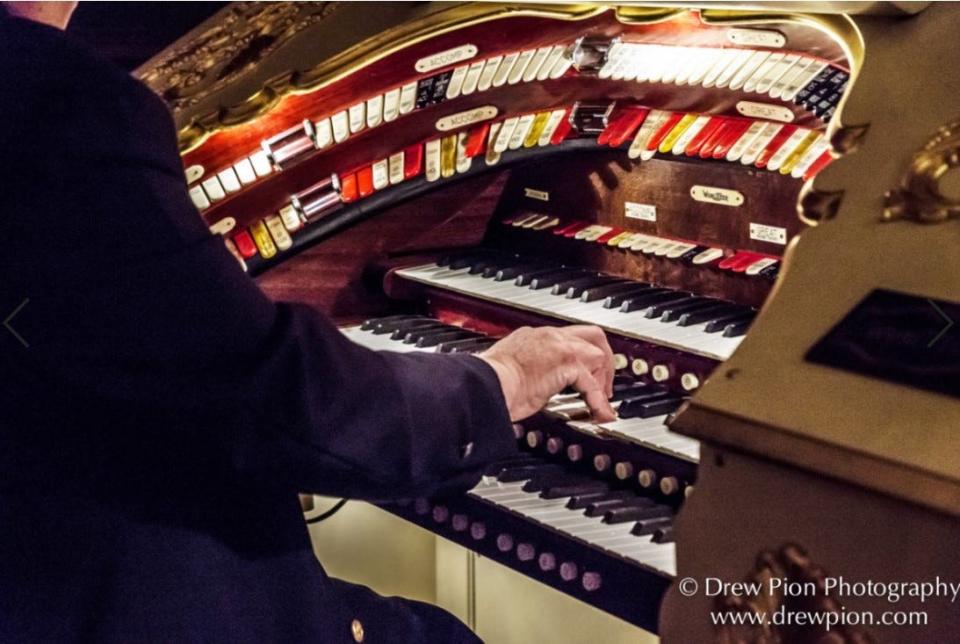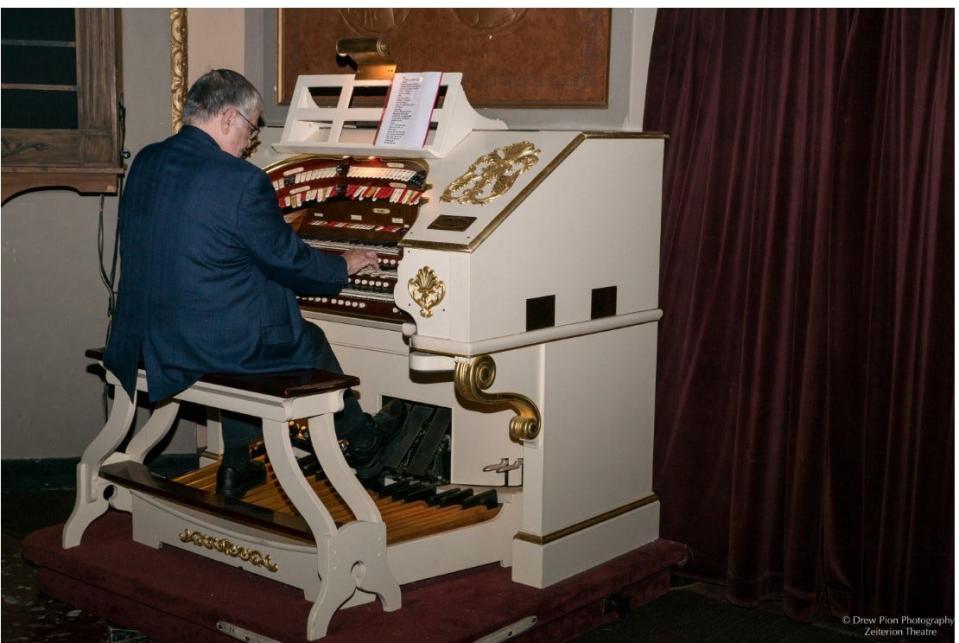Zeiterion's historic Wurlitzer theater organ considered most widely played in New England
NEW BEDFORD — Technology comes and goes, but some things are irreplaceable.
A century after it was first installed, the historic Wurlitzer theater organ that calls the Zeiterion home will be preserved and maintained as the theater undergoes its period of restoration beginning this fall. And when The Z reopens its doors, it will mark another chapter in the notable journey of this rare relic, thanks to the efforts of a devoted group of regional theater organ enthusiasts whose passion for the instrument has kept it an authentic and vital piece of The Z’s cultural contributions.
“It’s a minor miracle that we’ve been able to save this instrument when so many of its kind have been lost with time. Many times when a theater was knocked down the organ would go with it,” says New Bedford’s Ken Duffie, a board member of the Eastern Massachusetts Chapter of the American Theatre Organ Society (EMCATOS), the organization which owns and cares for the Wurlitzer.

Of the 2,000 Wurlitzers that were created beginning in 1915 in North Tonawanda, N.Y., there are less than 300 in use today. The Z’s Wurlitzer is one of only four in New England that is still being played in its original location. The Z’s Wurlitzer is considered the most widely played of its kind in New England. With its three keyboards and array of buttons, knobs and pedals, the organ can play up to 30 different instruments — including percussion, brass and wind. All the sounds produced by the organ come from pipes or real percussion instruments located in two rooms behind the ornate grilles on the left side of the auditorium. No electronic sounds are produced by the Wurlitzer. Skilled performers from throughout New England are brought to New Bedford just to play the instrument.
Today The Z’s Wurlitzer is used for as many as 50 events a year, primarily before Schooltime performances for area students, before select mainstage performances and to accompany silent films. From well-known Broadway and Disney tunes to classics such as “B-I-N-G-O” and “Take Me Out To The Ballgame,” the organ delights audiences of all ages.
Along with the banjo, the theater organ is the only instrument whose creation is solely American.

“This organ makes the Zeiterion special,” says Swansea’s Bob Evans, a board member of EMCATOS and the Zeiterion. “It’s a unique part of American history that you won’t hear in many other places. It sounds great from any seat in the theater.”
In its heyday of the 1920s, this unique and elaborate instrument was an economic alternative to orchestras — accompanying silent films, solo performances, and sing-along events at the Zeiterion, which was then known as the State Theatre. But with the advent of talking movies and other technological advances in the late ‘20s, the organ fell into disuse, experiencing water damage from a leaky roof as it sat stage-side in a corner of the auditorium.
But it had not been forgotten. Those with a passion for the instrument saw its value and went to significant lengths to rescue and restore it over the years, preserving the special experience that it alone can provide.
The organ’s voyage has been vast and improbable. In the mid-1970s, it was purchased from the Zeiterion by Paul Downing of Warwick, Rhode Island, a member of the Southeastern New England Theatre Organ Society (SENETOS), for $3,000. When Downing passed away a few years later, the organ was taken from his home, and thousands of its pieces were disseminated throughout the region in the homes and garages of different members of SENETOS.
This is when Duffie stepped in. From 1982 to 1989, the then-Vice President of SENETOS spearheaded the restoration of the organ, raising more than $125,000 from state and federal grants as well as charities and private donations. In November of 1989, the organ was reinstalled at the Zeiterion where it is performed to this day. Upon its reinstatement, ownership of the organ was transferred to the EMCATOS organization after SENETOS disbanded.
“We are tremendously grateful for the talent and dedication of EMCATOS in keeping The Z’s treasured mighty Wurlitzer organ in operation for more than 40 years,” says Rosemary Gill, CEO/President of the Zeiterion. “They not only provide the care and maintenance, they also supply the performers who bring the organ to life — and at no cost to The Z. EMCATOS is the heart and soul of this invaluable and unique element of our theater’s history.”
This article originally appeared on The Herald News: Historic Wurlitzer theater organ at Zeiterion a rare instrument

